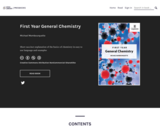
Short succinct explanation of the basics of chemistry in easy to use language and examples
- Subject:
- Chemistry
- Physical Science
- Material Type:
- Textbook
- Provider:
- eCampusOntario
- Author:
- Michael Mombourquette
- Date Added:
- 08/09/2021

Astronomy, Atmospheric Science, Chemistry, Geology, Hydrology, Oceanography, Physical Geography and Physics.

Short succinct explanation of the basics of chemistry in easy to use language and examples

Conocer los fundamentos teóricos de la química inorgánica es esencial para comprender los conceptos y principios esenciales de esta rama de la química, que se enfoca en el estudio de los elementos y compuestos inorgánicos; proporcionando una base teórica sólida para el estudio de otras áreas de esta ciencia. "Fundamentos Teóricos de Química Inorgánica", además de temas clave de la química inorgánica, como la teoría del enlace de valencia y la química de los elementos, también cubre temas importantes como la estructura de la materia, la teoría cuántica, la estequiometría y la clasificación de las reacciones químicas. Asimismo, se destaca la inclusión de temas relacionados con la medición de las propiedades de la materia, la descripción de los sistemas dispersos, entre otros. El objetivo de este libro es brindar una base sólida de conocimientos en química inorgánica, que permita al lector comprender los principios y fundamentos teóricos que rigen esta disciplina, con un enfoque claro y didáctico. El libro proporciona un excelente recurso tanto para estudiantes como para docentes. Razón por la que, "Fundamentos Teóricos de Química Inorgánica" es una obra esencial para aquellos que deseen profundizar en el conocimiento de la química inorgánica y comprender mejor sus conceptos fundamentales.
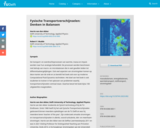
De transport- en overdrachtsprocessen van warmte, massa en impuls worden naar hun analogie behandeld. De processen worden beschreven met behulp van macro- en microbalansen die in veel gevallen leiden tot differentiaalvergelijkingen. Ook veel aspecten van stromingsleer komen op deze manier aan de orde en zo bereidt het boek ook voor op moderne Computational Fluid Dynamics technieken. Het doel van het boek is ook studenten te trainen in het oplossen van problemen waarbij transportverschijnselen centraal staan. Daartoe bevat het boek bijna 100 uitgewerkte vraagstukken.
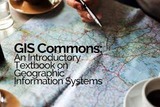
This is not a typical e-book; it is a free, web-based, open-source “textbook” available to anyone interested in using mapping tools to create maps. This e-text focuses primarily on Geographic Information Systems (GIS)—a geospatial technology that enables you to create spatial databases, analyze spatial patterns, and produce maps that communicate more effectively. While this GIS textbook is principally an introduction to GIS, most of the chapter’s concepts are applicable to other geotechnologies including remote sensing, global positioning systems (GPS), Internet mapping, and virtual globes.
Creating good maps and analyzing spatial data is a time consuming and challenging practice, but recently, a new set of powerful mapping tools has enabled almost anyone with a computer to make maps easily and to perform at least some low-level analyses. The results, however, are not encouraging. Most of the new mapmakers do not have adequate training in mapping concepts and spatial analysis principles, and their maps are often improperly designed and do not communicate easily nor effectively. This e-text—GIS Commons—seeks to help you analyze spatial data and communicate more effectively. In short, GIS education is our goal.
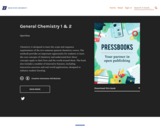
Chemistry is designed to meet the scope and sequence requirements of the two-semester general chemistry course. The textbook provides an important opportunity for students to learn the core concepts of chemistry and understand how those concepts apply to their lives and the world around them. The book also includes a number of innovative features, including interactive exercises and real-world applications, designed to enhance student learning.

Short Description:
This course provides an opportunity for students to learn the core concepts of chemistry and understand how those concepts apply to their lives and the world around them, meeting the scope and sequence of most general chemistry courses.
Word Count: 202978
(Note: This resource's metadata has been created automatically by reformatting and/or combining the information that the author initially provided as part of a bulk import process.)
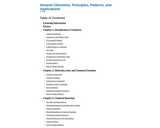
The overall goal of the authors with General Chemistry: Principles, Patterns, and Applications was to produce a text that introduces the students to the relevance and excitement of chemistry.Although much of first-year chemistry is taught as a service course, Bruce and Patricia feel there is no reason that the intrinsic excitement and potential of chemistry cannot be the focal point of the text and the course. So, they emphasize the positive aspects of chemistry and its relationship to studentsŐ lives, which requires bringing in applications early and often. In addition, the authors feel that many first year chemistry students have an enthusiasm for biologically and medically relevant topics, so they use an integrated approach in their text that includes explicit discussions of biological and environmental applications of chemistry.

This is a textbook on general relativity for upper-division undergraduates majoring in physics, at roughly the same level as Rindler's Essential Relativity or Hartle's Gravity. The book is meant to be especially well adapted for self-study, and answers are given in the back of the book for almost all the problems. The ratio of conceptual to mathematical problems is higher than in most books. The focus is on "index-gymnastics" techniques, to the exclusion of index-free notation. Knowledge of first-year calculus and lower-division mechanics and electromagnetism is assumed. Special relativity is introduced from scratch, but it will be very helpful to have a thorough previous knowledge of SR, at the level of a book such as Taylor and Wheeler's Spacetime Physics or my own text Special Relativity.
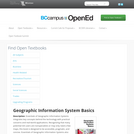
Essentials of Geographic Information Systems integrates key concepts behind the technology with practical concerns and real-world applications. Recognizing that many potential GIS users are nonspecialists or may only need a few maps, this book is designed to be accessible, pragmatic, and concise. Essentials of Geographic Information Systems also illustrates how GIS is used to ask questions, inform choices, and guide policy. From the melting of the polar ice caps to privacy issues associated with mapping, this book provides a gentle, yet substantive, introduction to the use and application of digital maps, mapping, and GIS.
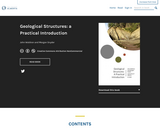
This manual is about structures that occur within the Earth’s crust. Structures are the features that allow geologists to figure out how parts of the Earth have changed position, orientation, size and shape over time. This work requires careful observation and measurements of features at the surface of the Earth, and deductions about what’s below the surface. The practical skills you will learn in this course form the foundation for much of what is known about the history of the Earth, and are important tools for exploring the subsurface. They are essential for Earth scientists of all kinds.
The course that this document supports is about doing structural geology. It’s not possible to be a good geologist (or to pass the course) just by learning facts. You have to be able to solve problems. Do your lab work conscientiously and get as much as possible done during lab sessions when instructors are available to help you.
This manual consists of both readings and lab exercises, which alternate through the text. The readings are designed to be read and understood outside the lab sessions, whereas the labs contain specific instructions and questions to be completed. Before each lab, be sure you have covered the readings that come immediately before it.
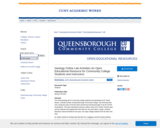
The online geology lab for community college students was developed by Dr. Rondi Davies, a faculty member at Queensborough Community College, City University New York, during two years of forced online synchronous learning brought on by the COVID-19 pandemic. This open educational resource collects many of Dr. Davies’ favorite open-access materials and supplements them with her own work within a single, cohesive laboratory manual intended for two-year, non-major college students from the New York area.
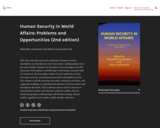
Short Description:
This first and only university textbook of human security, intended as an introductory text from senior undergraduate level up, and includes chapters by 24 authors that encompass the full spectrum of disciplines contributing to the human security field. It is based on the four-pillar model of socio-political security, economic security, environmental security and health security. The chapters include learning outcomes, extension activities, and suggested readings; a comprehensive glossary lists key terms used throughout the book. This textbook can be used in courses on international studies and relations, political studies, history, human geography, anthropology and human ecology, futures studies, applied social studies, public health, and more.
Long Description:
This first and only university textbook of human security is intended as an introductory text from senior undergraduate level up, to be used in courses on international studies and relations, political studies, history, human geography, anthropology and human ecology, futures studies, applied social studies, public health, and other fields.
Its second, thoroughly revised and updated edition will represent again in a coherent fashion the field of human security and will set it apart from more traditional models of security. Its approach is again deliberately multidisciplinary and transcultural. In addition to a thorough overview of the human security concept, the chapters address problems and opportunities in international law, politics, international relations, human ecology, ethics, law enforcement, development aid, human rights, and public health. The reader is also introduced to specific human security regimes that address human rights violations, peace building and conflict resolution, as well as global environmental governance.
The book encourages a vision of the future that acknowledges the certainty of change, extrapolates significant current trends, and questions the values, beliefs and ideals that tend to inform some dominant notions of development. Because of its transdisciplinary approach, the book will appeal to a very wide range of interests at the post-secondary/tertiary level. It will be of particular interest to undergraduate and graduate students and researchers, and also to educators from various disciplines in the natural sciences, social sciences, and humanities.
Word Count: 304560
ISBN: 978-1-77420-077-3
(Note: This resource's metadata has been created automatically by reformatting and/or combining the information that the author initially provided as part of a bulk import process.)
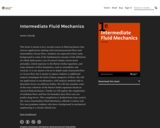
Short Description:
This book is meant to be a second course in fluid mechanics that stresses applications dealing with external potential flows and intermediate viscous flows. Students are expected to have some background in some of the fundamental concepts of the definition of a fluid, hydrostatics, use of control volume conservation principles, initial exposure to the Navier-Stokes equations, and some elements of flow kinematics, such as streamlines and vorticity. It is not meant to be an in-depth study of potential flow or viscous flow, but is meant to expose students to additional analysis techniques for both of these categories of flows. We will see applications to aerodynamics, with analysis methods able to determine forces on arbitrary bodies. We will also examine some of the exact solutions of the Navier-Stokes equations based on classical fluid mechanics. Finally we will explore the complexities of turbulent flows and how for boundary layer flows one can predict drag forces. This compilation is drafted from notes used in the course Intermediate Fluid Mechanics, offered to seniors and first year graduate students who have a background in mechanical engineering or a closely related area. Data Dashboard
Word Count: 105137
(Note: This resource's metadata has been created automatically by reformatting and/or combining the information that the author initially provided as part of a bulk import process.)
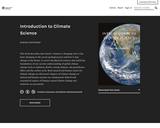
Short Description:
This book describes how Earth's climate is changing, how it has been changing in the recent geological past and how it may change in the future. It covers the physical sciences that build the foundations of our current understanding of global climate change such as radiation, Earth's energy balance, the greenhouse effect and the carbon cycle. Both natural and human causes for climate change are discussed. Impacts of climate change on natural and human systems are summarized. Ethical and economical aspects of human-caused climate change and solutions are presented. Data dashboard
Word Count: 52328
(Note: This resource's metadata has been created automatically by reformatting and/or combining the information that the author initially provided as part of a bulk import process.)
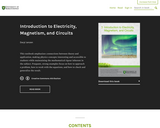
Short Description:
This textbook emphasizes connections between theory and application, making physics concepts interesting and accessible to students while maintaining the mathematical rigour inherent in the subject. Frequent, strong examples focus on how to approach a problem, how to work with the equations, and how to check and generalize the result.
Word Count: 197484
(Note: This resource's metadata has been created automatically by reformatting and/or combining the information that the author initially provided as part of a bulk import process.)
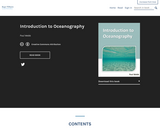
Introduction to Oceanography is a textbook appropriate to an introductory-level university course in oceanography. The book covers the fundamental geological, chemical, physical and biological processes in the ocean, with an emphasis on the North Atlantic region.
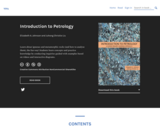
Short Description:
Learn about igneous and metamorphic rocks (and how to analyze them), the fun way! Students learn concepts and practice knowledge by conducting inquiries guided with examples based on videos and interactive diagrams.
Word Count: 20627
(Note: This resource's metadata has been created automatically by reformatting and/or combining the information that the author initially provided as part of a bulk import process.)
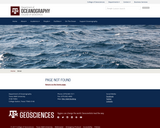
This book is written for upper-division undergraduates and new graduate students in meteorology, ocean engineering, and oceanography. After reading this book, it expected that students will be able to describe physical processes influencing the ocean and coastal regions: the interaction of the ocean with the atmosphere, and the distribution of oceanic winds, currents, heat fluxes, and water masses.
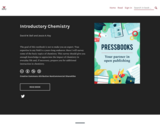
The goal of this textbook is not to make you an expert. True expertise in any field is a years-long endeavor. Here I will survey some of the basic topics of chemistry. This survey should give you enough knowledge to appreciate the impact of chemistry in everyday life and, if necessary, prepare you for additional instruction in chemistry.
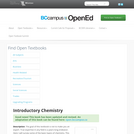
This survey should give you enough knowledge to appreciate the impact of chemistry in everyday life and, if necessary, prepare you for additional instruction in chemistry. Throughout each chapter, I present two features that reinforce the theme of the textbookthat chemistry is all around you. The first is a feature titled, appropriately, Chemistry Is Everywhere. Chemistry Is Everywhere focuses on the personal hygiene products that you may use every morning: toothpaste, soap, and shampoo, among others. These products are chemicals, arent they? Ever wonder about the chemical reactions that they undergo to give you clean and healthy teeth or shiny hair? I will explore some of these chemical reactions in future chapters. But this feature makes it clear that chemistry is, indeed, everywhere. The other feature focuses on chemistry that you likely indulge in every day: eating and drinking. In the Food and Drink App, I discuss how the chemistry of the chapter applies to things that you eat and drink every day. Carbonated beverages depend on the behavior of gases, foods contain acids and bases, and we actually eat certain rocks. (Can you guess which rocks without looking ahead?) Cooking, eating, drinking, and metabolismwe are involved with all these chemical processes all the time. These two features allow us to see the things we interact with every day in a new lightas chemistry.